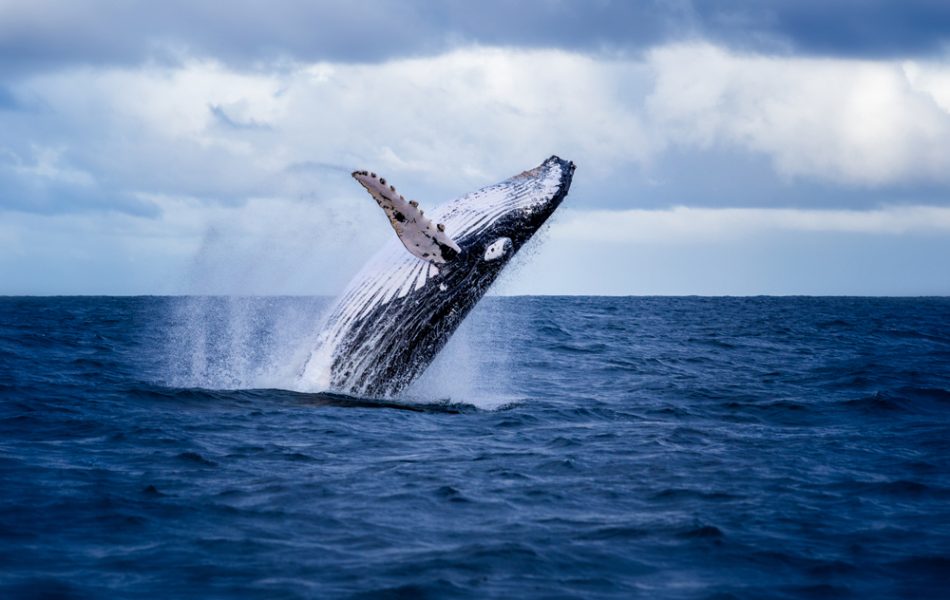The sea is still largely unexplored and not understood, with a recent study revealing that two-thirds of seafloor life is waiting to be discovered. Even the species that are well studied are still shrouded in mystery and there is lots of work to be done in understanding sea life biology, migration patterns, and behavior in general.
Scientists from the University of Exeter and the University of Stellenbosch have just completed a breakthrough study helping humans get one step closer to understanding one of the biggest animals on the planet, the humpback whale. The group collected recordings of the majestic creatures at the Vema Seamount, in the Atlantic Ocean, to find out more about their communicative sounds.
What did they find?
The whale sounds were categorized into continuous “songs” and shorter “non-song” calls. The non-song calls were the focus of the study, with over 600 recorded over 11 days. The team deciphered multiple types of these calls – including “grumbles,” “whups,” and “gunshots” – some of which have never before been recorded.
The “whump” was the most common sound recorded and is thought to be used as a contact call between mother-calf pairs. “Whups” are also used by humpback whales whilst feeding.
Why is understanding this important?
The high sea ecosystem holds some of the largest reservoirs of biodiversity on Earth. It provides migratory routes for whales and sharks, supports fisheries, and harbors remarkable marine life. Knowing more about how it operates can help conservationists put actions in place to save it.
The Vema Seamount holds a unique amount of biodiversity and is important for many migrating species, having an impact on currents, waves, upwelling, and tides. However, no legally binding international agreement has been put in place to protect such an important part of the high seas.
“50 years ago, governments came together to turn around the fate of humpback whales,” said Kirsten Thompson who worked on the project. “Now they have a chance to secure the progress already made and protect the high-seas habitats that whales rely on.”
They continued: “While such large areas of our oceans remain unprotected, these ecosystems are highly vulnerable. A coherent and connected network of Marine Protected Areas (MPAs) across our oceans is urgently needed to ensure seamounts like Vema are protected.”
Source study: JASA Express Letters – Detection of humpback whale (Megaptera novaeangliae) non-song vocalizations around the Vema Seamount, southeast Atlantic Ocean











